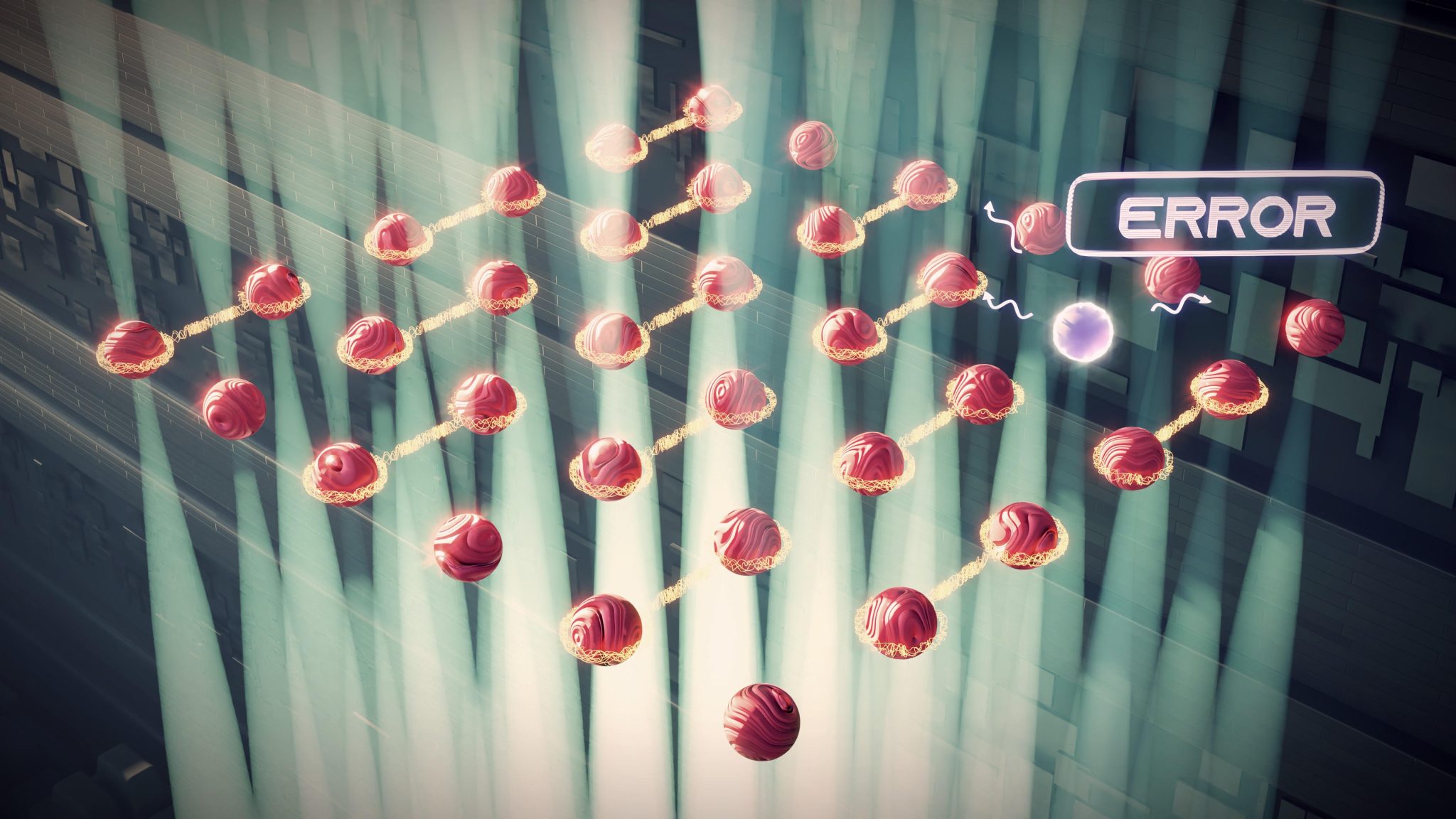
Et team ledet av Jeff Thompson fra Princeton University var banebrytende for en tilnærming til mer effektiv feilretting i kvantedatamaskiner. Kreditt: Gabriele Meilikhov/Muza Productions
En ny feilrettingsmetode.
Forskere har avdekket en helt ny teknikk for å korrigere feil i kvantedatamaskinberegninger, som potensielt eliminerer en betydelig barriere for et kraftig nytt felt innen databehandling.
Feilretting er et godt utviklet emne i tradisjonelle datamaskiner. For å overføre og motta data over rotete luftbølger, krever hver mobiltelefon kontroller og justeringer. Kvantedatamaskiner har et enormt potensial til å takle kompliserte problemer som konvensjonelle datamaskiner ikke kan, men denne kapasiteten er avhengig av å utnytte den utrolig flyktige oppførselen til subatomære partikler. Denne databehandlingen er så flyktig at selv å inspisere dem for feil kan føre til at hele systemet kollapser.
Et tverrfaglig team ledet av Jeff Thompson, en førsteamanuensis i elektro- og datateknikk ved Princeton Universityog samarbeidspartnere Yue Wu og Shruti Puri kl Yale University og Shimon Kolkowitz på University of Wisconsin-Madisondemonstrert i en teoretisk artikkel publisert i
“If your baseline error rate is too high, redundancy is a bad strategy,” Thompson said. “Getting below that threshold is the main challenge.”
Rather than focusing solely on reducing the number of errors, Thompson’s team essentially made errors more visible. The team delved deeply into the actual physical causes of error and engineered their system so that the most common source of error effectively eliminates, rather than simply corrupting the damaged data. Thompson said this behavior represents a particular kind of error known as an “erasure error,” which is fundamentally easier to weed out than data that is corrupted but still looks like all the other data.
In a conventional computer, if a packet of supposedly redundant information comes across as 11001, it might be risky to assume that the slightly more prevalent 1s are correct and the 0s are wrong. But if the information comes across as 11XX1, where the corrupted bits are evident, the case is more compelling.
“These erasure errors are vastly easier to correct because you know where they are,” Thompson said. “They can be excluded from the majority vote. That is a huge advantage.”
Erasure errors are well understood in conventional computing, but researchers had not previously considered trying to engineer quantum computers to convert errors into erasures, Thompson said.
As a practical matter, their proposed system could withstand an error rate of 4.1%, which Thompson said is well within the realm of possibility for current quantum computers. In previous systems, the state-of-the-art error correction could handle less than 1% error, which Thompson said is at the edge of the capability of any current quantum system with a large number of qubits.
The team’s ability to generate erasure errors turned out to be an unexpected benefit from a choice Thompson made years ago. His research explores “neutral
One use of those extra tools turned out to be useful for eliminating errors. The team proposed pumping the electrons in ytterbium and from their stable “ground state” to excited states called “metastable states,” which can be long-lived under the right conditions but are inherently fragile. Counterintuitively, the researchers propose to use these states to encode the quantum information.
“It’s like the electrons are on a tightrope,” Thompson said. And the system is engineered so that the same factors that cause error also cause the electrons to fall off the tightrope.
As a bonus, once they fall to the ground state, the electrons scatter light in a very visible way, so shining a light on a collection of ytterbium qubits causes only the faulty ones to light up. Those that light up should be written off as errors.
This advance required combining insights in both
“We see this project as laying out a kind of architecture that could be applied in many different ways,” Thompson said, adding that other groups have already begun engineering their systems to convert errors into erasures. “We are already seeing a lot of interesting in finding adaptations for this work.”
As a next step, Thompson’s group is now working on demonstrating the conversion of errors to erasures in a small working quantum computer that combines several tens of qubits.
Reference: “Erasure conversion for fault-tolerant quantum computing in alkaline earth Rydberg atom arrays” by Yue Wu, Shimon Kolkowitz, Shruti Puri and Jeff D. Thompson, 9 August 2022, Nature Communications.
DOI: 10.1038/s41467-022-32094-6
The study was funded by the National Science Foundation, the Army Research Office, the Defense Advanced Research Projects Agency, the Office of Naval Research, and the Alfred P. Sloan Foundation.